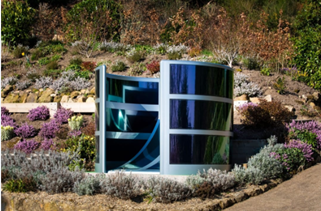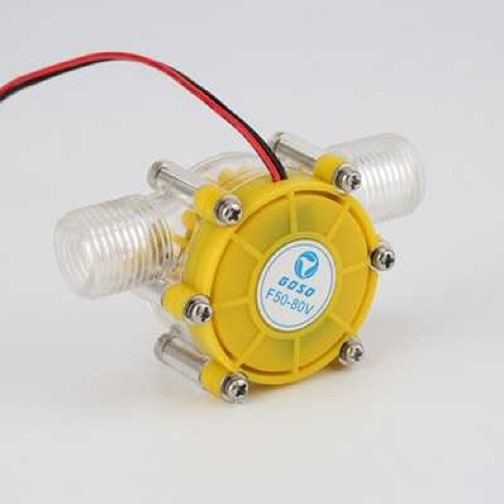Climate Change and the Rising cost of Fish Keeping

Many conversations amongst breeders lately are dominated by the increasing challenges of the cost of energy to run a fish house, and effect of climate change on the breeding season.
It feels like winter has extended into April this year, which means a slow start to the breeding season, unless we can afford the cost of using the energy to heat our fish houses for spawning and bring up fry.
Cornwall Insights, one of the UK’s leading consultants on Net Zero targets and energy tariffs*, predicts that though the price cap will drop next year, it will not drop below an average of £2000.

Alongside the energy crisis we have the effects of Climate change. The Met Office predicts across the UK, that we expect to see:
Warmer and wetter winters (Leading to needing to feed our fish in winter)
Hotter and drier summers (increasing growth rates, but requiring ways to cool our fish houses)
More frequent and intense weather extremes (Such as the storms and snow in April)
Climate change will make these conditions more likely. The UK’s weather will continue to be variable, but we will see more of this type of weather.

Ultimately these factors will both cause Fish keepers to give up the hobby or change the design of the fish house to cope with these factors. This idea led me to start looking around at what could be included in Fish houses of the future.
Our base design for most hobbyists is to use an outside building that is either a greenhouse of very similar (Poly Carb roofed wooden building, or poly tunnels) in other words repurposed from Horticulture, and it is fair to say that there are plenty of ideas on how to be carbon neutral and self-sufficient when growing food in greenhouses. Here are some I have found.
Ground to Air Heat Transfer (GAHT®) system
Building a fish house with a Ground to Air Heat Transfer (GAHT®) system, sometimes referred to as a ‘climate battery’ or a Greenhouse Heatsink. The basic principle would be to use a fan to draw warm humid air below ground where energy would be stored, returning cooler dry air to the fish house. Then when temperatures drop above ground the flow of air would draw the heat stored below ground back into the fish house.
During the first series of BBC2’s It’s Not Easy Being Green, Richard Strawbridge put together a greenhouse heating system using a 10-Watt Solar Panel, a 12V battery, a small fan, some PVC waste pipe, and 1 cubic metre of crushed glass. The Solar Panel was used to power a PC fan in a greenhouse heatsink system, moving the air through the static mass buried beneath the greenhouse, preventing the house getting too hot during the day, and warming it at night.
Solar Power
Many question the feasibility of solar energy in the UK, however it not as bad as you would imagine. With the UK receiving an annual insolation of between 750–1,100 kilowatt-hours per square metre (kWh/m2). While its obviously not Spain, the changes in climate can only benefit Solar energy in the UK.
Derry Newman, chief executive of Solar century, argues that the UK’s “famously overcast weather does not make it an unsuitable place for solar power, as solar panels work on daylight, not necessarily direct sunlight. Some solar cells work better in direct sunlight, others can use more diffuse light. While insolation rates are lower in England than France and Spain, they are still usable”
Of course, a fish house isn’t ideal for supporting traditional solar panels, however over the coming years we will see Solar Energy Film technologies surfacing. Solar Film is light enough to go on windows and blinds and therefore suitably light enough to go on any roof. One such example is PowerRoll which opened its pilot manufacturing plant in the Northeast, in February this year. PoweRoll have created a lightweight photo-voltaic (PV) film at a minimum of 10% efficiency, with a manufactured cost of about £8 per sq. m [10 sq. ft].
They expect retail prices from partners who use the product to be as low as 10-12p per kWh over 10 years, which is a big challenge to existing energy suppliers.
Another interesting option is the The Solivus Arc. Aiming to supply an average of 1,000 kWh a year in the UK, Solivus will guarantee the £3,500 Arc for 20 years, Solivus plans to let buyers pay in instalments at a cost that would be the equivalent of 21p per kWh locked-in for 20 years… then, after that, it’s free.

Solar Water Heating
Other possibility is to use Solar energy to increase water temperature in the fish house. Traditionally we bring on fry in a tank that is exposed to sunlight, or we use aquarium heaters. To take the burden off the heaters, by exposing the water to solar energy in a more efficient manner might be the answer. Either inline with a drip system, or as part of recycling water from filters. Allowing the water to pass through coils of pipes to warm the water, mixing back in to raise the overall temperature of the water in our tanks.

s
Or perhaps something more commercial evacuated tube systems, designed for heating water for the household, such as the one below:

Reclaiming Energy
All these processes so far rely on the fundamental law of nature that energy cannot be made or destroyed, just transformed from one form into another. More and more we are going to see devices designed to harvest even the smallest amount of energy we are wasting. So, thinking along these lines I guarantee (that as a fish keeper) we transfer energy through water flow. One idea would be a small Turbine on that water flow, such as the one pictured below.

This would be ideal just before a 3 stage HMA filter, where reducing the flow rate is no bad thing, giving the filter a better chance of doing its job. While at the same time this turbine could be producing 10w of power, good enough to run an air pump or run lighting in the fish house perhaps?
Wind Power
I thought a word on Wind Power would be appropriate given the UK weather. I was disappointed to find three distinct problems.
- Most DIY kits do not perform as sold, and people should be careful of their expectations
- The upfront cost of a wind turbine that works is high: a pole-mounted system that generates about 6kW could set you back between £23,000 and £34,000.
- They’re not suitable for every home: home wind turbines just don’t work for everyone. You need to have the right wind speed to power them, which means you need lots of unobstructed space – which is usually only the case in rural homes
Overall, I think the next few years will be challenging for anything consuming electricity, let along Fish Breeding. As a result, we will either lower our expectations, growing fish slower and only showing adult fish. Or find ways for our fish houses to be more energy efficient. Hopefully some of the ideas above give you good reader food for thought.
By Grahame Draper







